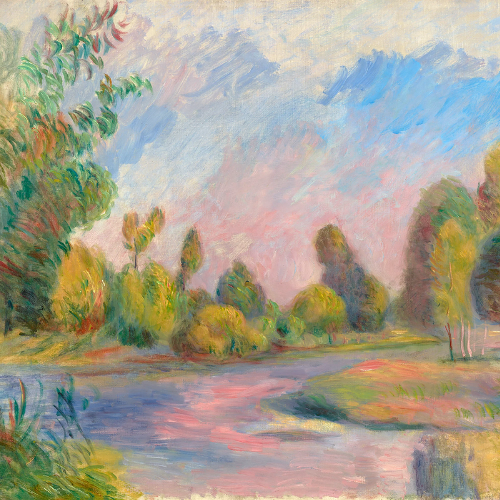When an artist makes their mark on paper, canvas, or sculpture, it can serve to identify, distinguish or finalize the authenticity of an artwork. An unsigned painting can be more difficult to identify. A clear and legible signature is helpful when evaluating a work of art, but its presence, or lack thereof, might reveal more about the work than you realize. Read on to learn more about the history, importance, and hidden meanings of unique artist signatures.

History
While artist signatures were not unheard of earlier in history, they became more a matter of course during the Renaissance. A fertile time for the arts, the Renaissance shifted away from a more guild-based system of creation to the individual artist. One of the most important concepts to emerge during the Renaissance was Humanism, which valued personal experience. This movement focused on the revival of classical learning, realism, and individualism. The Renaissance reached its height in Florence, Italy, due in large part to the Medici, a wealthy merchant family dedicated to humanism and believing firmly in the autonomy of the individual. Their numerous artistic commissions reflected these ideals, and artists began to sign their work to differentiate themselves amid these myriad commissions.

The Importance of Artist Signatures
Signatures are among the first things researchers or appraisers look for when evaluating a work of art and its authenticity.Their value in helping identify a work of fine art is undeniable. However, it is also important to note that signatures are not always present - and not always essential to the attribution, value, or validity of a work. Signatures were not ubiquitous even after they became more common during the Renaissance, and most Old Masters works were not signed. Even in modern times, some artists never signed their creations. A savvy gallery or auction house takes into consideration a wide variety of aspects when attributing an artwork to an artist, including style, technique, materials used, and subject matter, with the signature and signature style being only one part of the puzzle.

The type of artwork at hand is also important to consider. A sketch or preparatory drawing is often much less likely to bear a signature as, for instance, a large-scale oil painting created for the art market. Sometimes, artists only sign or initial work they intend to sell - bringing us to our next point.
Stamp Signed
There are also different styles of signatures. Something that appears frequently on the art market that potential art buyers have questions about is the term "stamp signed." So, what does this term mean, and when is it applicable?
The term “stamp signed” does not indicate forged signature. Rather, it indicates that a stamp has been created based on the artist's actual signature or monogram to apply to the work in place of a hand-painted or handwritten signature. The artist can authorize this, but often, stamp signatures are approved by the estate of a deceased artist. An artist's studio is often full of unsold, unsigned works after the artist's death, and an estate will then apply a stamped signature when those pieces enter the art market. When authorized by the artist or estate, stamp signatures indicate a completely validated and accepted work by the artist in question. This is commonly seen with Impressionist and Post-Impressionist works due to their increasing popularity among collectors in the first half of the 20th century.

Hidden Artist Signatures
The lower right or left corner of a canvas is not the only place an artist's signature may appear. Artists have the freedom to apply their mark anywhere on the work, and they sometimes get creative. An obvious place to look for a missing signature is the reverse of the piece, where it might be placed if an artist does not want to detract from the composition.
Signatures can be hidden in this way - or hidden in plain sight. A clever artist, particularly in the case of trompe l'oeil paintings designed to trick the eye into envisioning a realistic scene in front of them, could place their signature within the composition itself, perhaps on a scroll or within the woodwork of a table. An art historian may pay very close attention to a piece of art to identify the signature.

Signatures can also be obvious, but so stylized that they become an element of the composition, revealing aspects of the artist themselves. While enormous signatures on original paintings are not very common, they do appear from time to time. Salvador Dalí, for example, would occasionally paint a very large, prominent signature within the work, embellishing it with design details.. For Dalí, this type of placement inserts him into the piece, reflecting his eccentricities and showmanship both on the canvas and in his personal life.

Signatures and Dates
Signatures are as special as the artist and artwork themselves, and they can vary even within one individual artist's oeuvre over their career. Carefully examining the subtle or drastic changes in an artist's signature over time can tell you a great deal about the work at hand, and these differences can be instrumental in helping determine when a piece was created. Pablo Picasso (another famous artist) is an excellent example. In the Cubist period, Picasso did not often sign the front of his paintings to prevent competing with the complex lines and visual construction of the work itself. It was not until later that he developed his "signature" signature, complete with a swooping line underscoring his last name. He signed many of his famous portrait paintings, making them all the more valuable.







